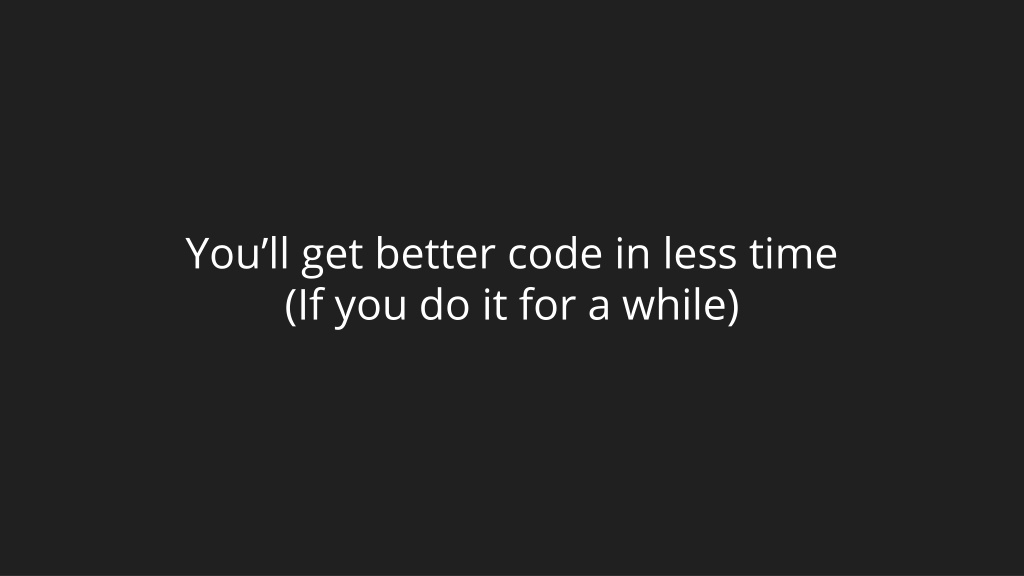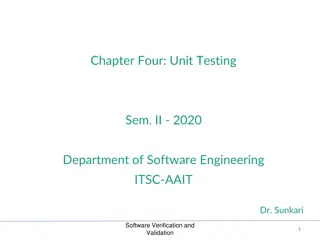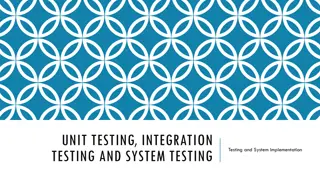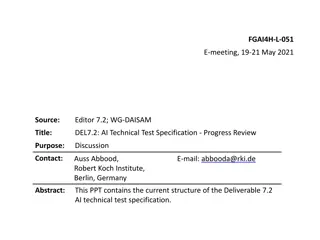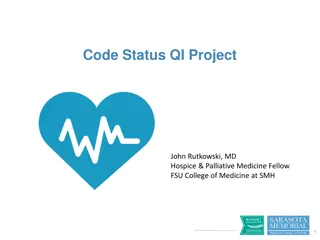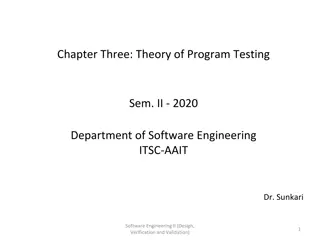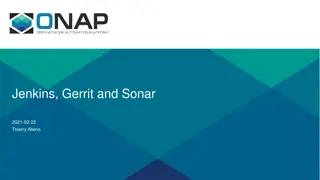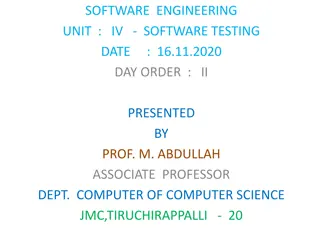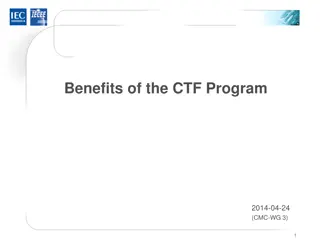Improving Code Quality Through Unit Testing: Tips and Best Practices
Unit testing is a key aspect of software development where individual units of code are tested independently. This process helps in ensuring proper operation and identifying bugs early on. By following tips like automation, repeatability, and thinking of boundary cases, developers can write effective unit tests for their code, leading to better software quality and efficiency.
Download Presentation

Please find below an Image/Link to download the presentation.
The content on the website is provided AS IS for your information and personal use only. It may not be sold, licensed, or shared on other websites without obtaining consent from the author. Download presentation by click this link. If you encounter any issues during the download, it is possible that the publisher has removed the file from their server.
E N D
Presentation Transcript
Youll get better code in less time (If you do it for a while)
Workshop Download Start guessing range can be setted. Game have only one answer. User can guess a number in between guessing range After a guess game will tell how far is the answer If guess correct will result HIT greater or lesser between 1 - 5 will get Very close greater or lesser between 6 - 20 will get Close greater or lesser between 21 - 40 will get Not close
Test Driven Development & Unit Test By: Krittayot Techasombooranakit & Supavit Kongwudhikunakorn
Unit Testing Sources:- Computer Science and Engineering, University of Washington Electrical Engineering and Computer Science, Massachusetts Institute of Technology The Art of Unit Testing Martin Fowler
Definition A software development process in which the smallest testable parts of an application, called units, are individually and independently scrutinized for proper operation. (src: http://searchsoftwarequality.techtarget.com/definition/unit-testing)
Concept For a given class Rorpap, create another class RorpapTest to test it. RorpapTest contains various test case methods to run Each method looks for particular results and passes / fails
(src: http://martinfowler.com/bliki/images/unitTest/sketch.png)
Properties of a good unit test should be automated and repeatable should be easy to implement once it s written, it should remain for future use anyone should be able to run it should run at the push of a button should run quickly
Tips for writing unit test You cannot test every possible input, parameter value, etc. so you must think of a limited set of tests likely to expose bugs Think about boundary and empty cases positive; zero; negative numbers min/max value right at the edge of an array or collection s size null; an empty array or list; empty string bugs often occur at boundaries off-by-one error
Trustworthy unit tests Test one thing at a time per test method 10 small tests are better than 1 test 10x as large Each test method should have few (likely 1) assert statements If you assert many things, the first that fails stops the test. You won t know whether a later assertion would have failed Tests should avoid logic. minimize if/else, loops, switch, etc. avoid try/catch If it s supposed to throw, use expected
Test case smells Tests should be self-contained and not care about each other. Smells (bad things to avoid) in tests Constrained test order (i.e. Test A must run before Test B) (usually a misguided attempt to test order/flow) Tests call each other (i.e. Test A calls Test B s method) (calling a shared helper is OK, though) Mutable shared state (i.e. Tests A/B both use a shared object). (if A breaks it, what happens to B?)
Test coverage If you make a certain level of coverage a target, people will try to attain it. Trouble: High coverage numbers are too easy to reach with low quality testing Trouble: Distracting you from testing the things that really matter Low coverage numbers are a sign of trouble High coverage numbers don t necessarily assure bugs free
How much testing is enough? You rarely get bugs that escape into production You are rarely hesitant to change some code for fear that it will cause production bugs
Unit test frameworks Grunt, Mocha, Chai - Javascript NUnit - .NET JUnit - Java minitest - Ruby py.test - Python SnapTest - PHP
Exercise 1 Design a unit test to determine if the input number considered to be a prime number Description: It accepts any input n for n is a number where 1 <= n <= 100 It outputs prime number if n is a prime number; otherwise, not a prime number ; If n is invalid, invalid
Exercise 1 - Solution If n is not a number, invalid If n is -1, invalid If n is 0, invalid If n is 1, not a prime number If n is 2, prime number If n is 3, prime number If n is 50, not a prime number If n is 97, prime number
Exercise 2 Design a unit test to determine grade by inputting a total scores Description: It accepts any input n for n is a number where 0 <= n <= 100 n is considered valid only when 0 <= n <= 100 n can contains decimal places It outputs corresponding letter grade if n is valid; otherwise, invalid
Exercise 2 - Solution If n is not a number, invalid If n is below 0, invalid If n is more than 100, invalid If n is 0, F If n is 50, D If n is 55, D+ If n is 60, C If n is 70, C+
Test-driven development Shortest development cycle in software process Quality assure every cycle
TDD Cycle Write test case (Fail) Make some change (Pass) Refactor (Cleaned)
Step-by-step 1.Add test (Design in your head) 2.Run the test (Make sure it s fail) 3.Write the code 4.Run the test (Make sure it s pass) 5.Refactor
Behavior-driven development (BDD) Ensure every behavior in the user stories have done Describe in human way (not technician) Good for principal or customer perspective Given-When-Then statements
TDD Write test case (Fail) Make some change (Pass) Refactor (Cleaned)
BDD TDD Fail Write behavior test case (Fail) Clean ed Pass
What you get. Testable code Design and plan before code Documents the design in themselves Actually know what to code Cleaned code Make code significant better
Keep in minds 1. The 4 Rules of Simple Design Pass all test i. If have any fail have to fix immediately DRY - No duplicated code i. Every piece of behavior must have only one representation Reveal intent i. Make naming easy to understand ii. Meaningful naming Keep it small Never code what is not use
Workshop - Guessing games Game must have start and end range of guessing number. Guessing range is between 0 to 100 Start guessing range can be setted Answer randomed at the start of the game in between guessing range. User can guess a number in between guessing range. After a guess game will tell how far is the answer If correct will get HIT greater or lesser between 1 - 5 will get Very close greater or lesser between 6 - 20 will get Close
Workshop Downloads Node.JS Vistual Studio Code (Optional) Clone template open commandline type in git clone https://github.com/benzsuankularb/js-template.git cd js-template npm install
Additional Kind of TDD Mockist TDD (Outside-In) Classicist TDD (Inside-out) Bad of TDD TDD make your code significant better, Also can make your code significant terrible. Cost much time if not a TDD expert
